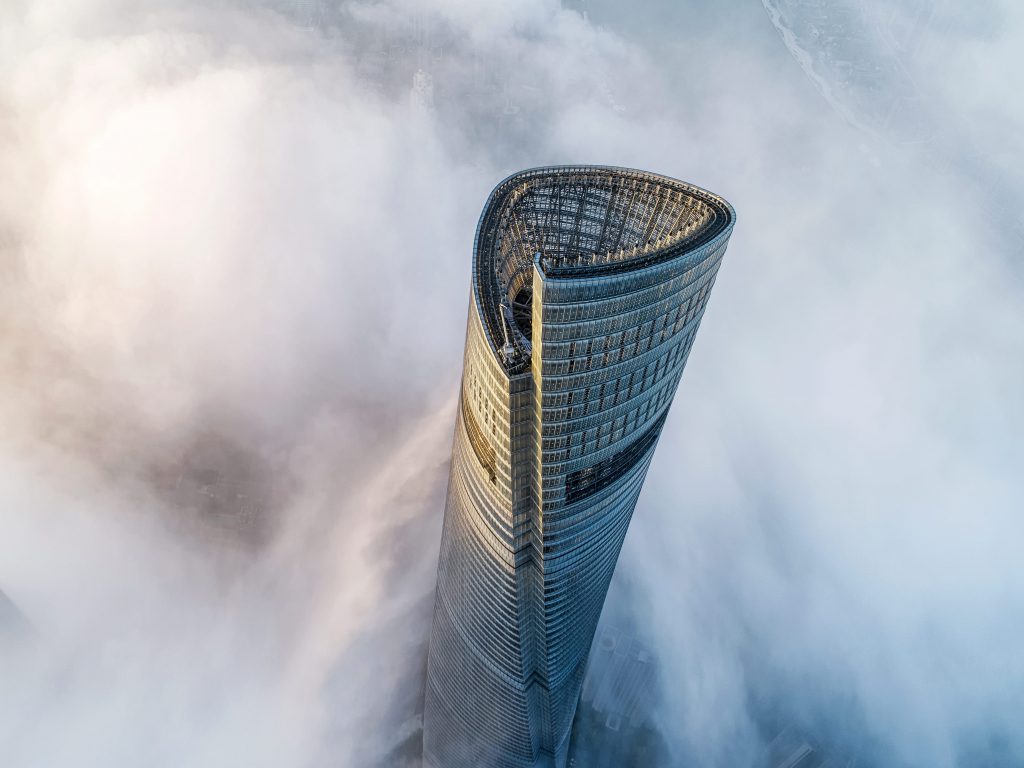- China has more skyscrapers than any other country in the world.
- It's home to what author Stefan Al described as the "world's first triple-adjacent supertall cluster" in his new book, "Supertall."
- Shanghai Tower, Shanghai World Financial Center, and Jin Mao Tower form the cluster.
China may not have the world's tallest skyscraper, but it's home to five of the world's ten tallest buildings, per the Council on Tall Buildings and Urban Habitat. Three of those skyscrapers happen to be grouped together in a cluster right in the financial district of Shanghai.
In a new book called "Supertall," architect Stefan Al examines skyscrapers around the world and how they shape our skylines — including what he calls the "world's first triple-adjacent supertall cluster."
"That's really quite rare because we usually have a supertall stand by itself," Al told Insider of the Shanghai cluster. "But here we have three and they're all next to each other. They were built a couple of years from one another, and every new one was built higher to top the previous one."

Located in Lujiazui, Shanghai's financial district, the supertall cluster consists of Shanghai Tower, Shanghai World Financial Center, and Jin Mao Tower.
"The most recent one is Shanghai Tower, which is the tallest tower in China. But the other two were also the tallest towers when they were built," Al said. "When Jin Mao Tower was built, it was the tallest. A couple of years later, it was followed by Shanghai World Financial Center, which exceeded the height of Jin Mao Tower as the new tallest building in China."
Take a look at China's supertall cluster.
1. Jin Mao Tower
Height: 1,380 feet
Year completed: 1999

Jin Mao Tower has a tiered facade that's inspired by a pagoda, per SOM, the architectural firm responsible for the building's design.
"It has this facade that's really textured, so you see lots of metal mullions and railings. Some of these are quite useful in that they're like tracks for window-washers," Al said.
The 88-story building houses a Grand Hyatt Hotel on its upper floors, while offices occupy the remaining floors.
2. Shanghai World Financial Center
Height: 1,614 feet
Year completed: 2008

Like Jin Mao Tower, Shanghai World Financial Center is also home to a hotel: Park Hyatt Shanghai is located on the 79th to 93rd floors of the building. The other floors house a mix of office spaces and retail stores, per architectural firm KPF, which designed the building.
The design of Shanghai World Financial Center is iconic due to a trapezoidal cutout at the top of the building, which was originally meant to be a circle, per Al's book.
"However, the idea of a massive circle rising above Shanghai's skyline led to a public outrage. The Chinese public associated it with a rising sun, the symbol of the Japanese flag," Al wrote in the book. In response to the backlash, the designers decided to change the circle to a trapezoid.
3. Shanghai Tower
Height: 2,073 feet
Year completed: 2015

Shanghai Tower is the tallest in China, per the Council on Tall Buildings and Urban Habitat.
It may be second in height to Dubai's Burj Khalifa, but it has 20% more floor area, per Al's book. The elevator shaft in Shanghai Tower also runs farther than the Burj's.
"Its whopping 1,898-feet length exceeds the Burj's shaft by 240 feet, and zips you all the way from the bottom to the top in a single shot under 55 seconds," Al wrote. "To get from the ground to the top would have required 3,398 stairs, and a grueling climb of 53 minutes."
There were other structural concerns that had to be accounted for in the tower's design. Its twisted design, including the nook that's cut into the side of the building, keeps the building safe from the forces of the wind, Al told Insider. A perfectly round tower can be dangerous when there are strong winds, due to a phenomenon called vortex shedding, which causes a force to pull on the building.
"Normally, if the wind blows on a round object, it just follows the surface of the circle and collects at the back," Al said. "But if you have an irregular surface, in this case, this nook, then the wind can no longer track the surface of the building and it will just dissipate."
"Supertall" was released on April 12, under the publisher W. W. Norton & Company.
